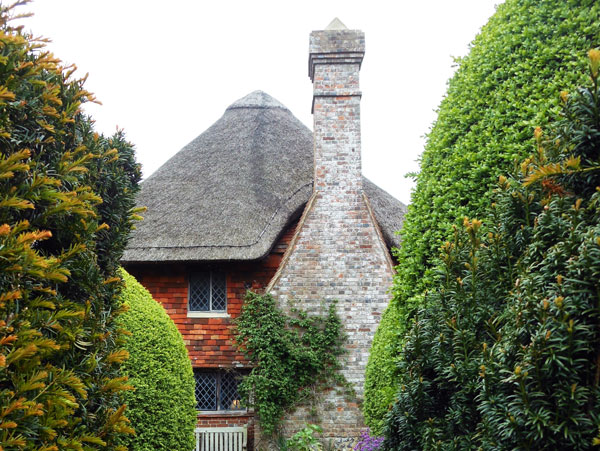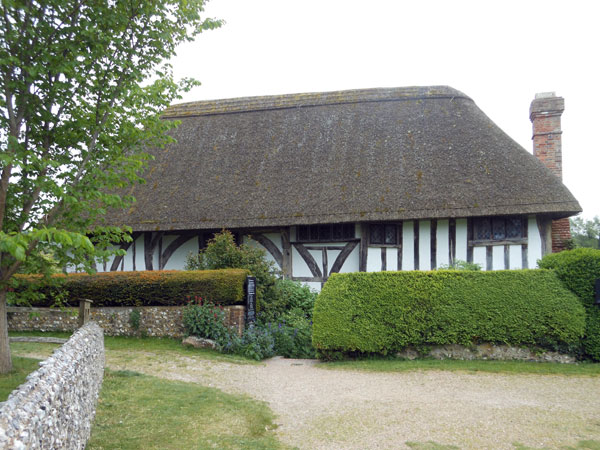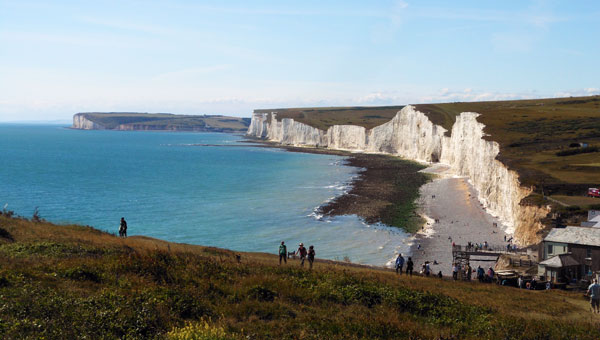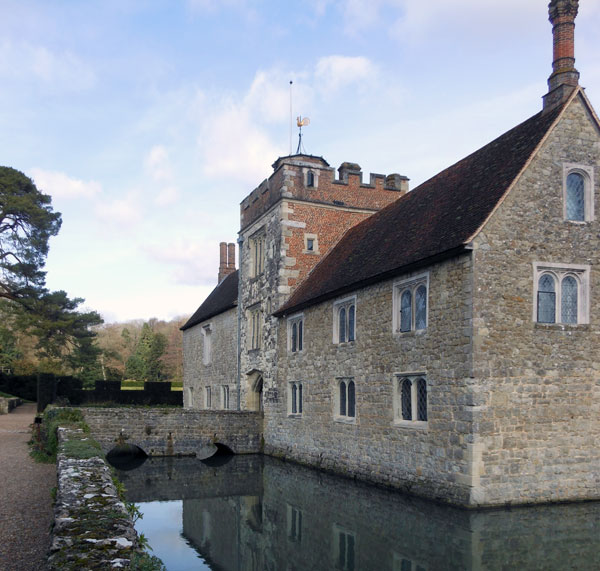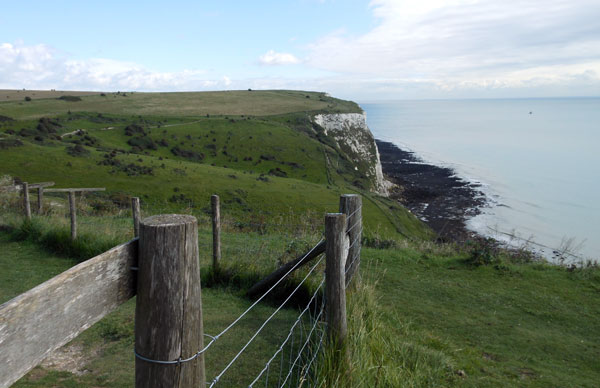Royal Oak is lucky to have employed dedicated staff members over the years who cherish the National Trust and its mission to protect special places forever, for everyone. Yvonne Raptis is certainly one of those staff members. She previously served as our Director of Administration and Finance before moving back to her native UK in 2014.
She now takes advantage of her relatively close proximity to dozens of National Trust properties with frequent visits to these special places with her husband and daughter. Today, she’s sharing one of her favorite past times, a long country walk with a National Trust tea room to cap off the day. Use this as inspiration to plan your next trip, join today!
By Yvonne Raptis
I love walking and England has plenty of beautiful and varied countryside to offer. I like to set out from a National Trust place (with my sandwich!) and do a circular walk lasting about two hours, then a visit to the house followed by afternoon tea, my preference being a pot of Earl Grey with either a scone or Victoria sponge , both of which are excellent at National Trust tea rooms.
Bodium Castle in East Sussex is right out of a fairy tale, a beautiful medieval castle complete with a moat and battlements, but beware of the murder holes in the gatehouse ceiling, through which boiling water or stones could be dropped on attackers. I always carry an Ordnance survey explorer map which clearly shows all the public footpaths. I had found a circular walk on the map, of about four miles that I could follow starting from the north side of the grounds of the castle, near Castle Cottage. I followed the path uphill for a while and had a fantastic view looking back, of the castle and moat. This walk took me over stiles, through fields, some muddy (wear good walking boots), past fields of horses and cows, and down a country lane. When I was at the furthest point from the castle it started to pour, so a waterproof coat with hood and some warm gloves are essential for winter walks in England. Back at the castle I went up to the battlements to enjoy the view, as it had stopped raining, and finished my outing with a pot of tea and a scone in the tearoom, very civilized, and I changed out of my muddy boots before tea!
One of my favorite places to go walking is on the South Downs. There are no trees on the chalk hills, only grass and lots of sheep, so you can see for miles in any direction. I parked my car in Alfriston and set out walking west up a steep hill and on to the top of the downs, following the South Downs Way. It was a clear day and the views were fantastic with the English Channel sparkling to my left, and the Sussex countryside on my right. I walked along the ridge of the Downs until I got to Firle Beacon, then walked a short way back east before heading north down one of the steep paths that led down the side of the escarpment through several fields of sheep onto a farm track to Charleston, home to members of the Bloomsbury set. It’s a very pretty and interesting place to visit and was well worth the detour. Charleston is one of the non-National Trust projects in the UK supported by Royal Oak. I stopped for tea and cake before the steep climb and walk back to Alfriston, where I visited the Clergy House (which does not have a tea room, hence my stop at the tea room at Charleston!) The Clergy House, a very picturesque medieval thatched hall-house, was the first property to be acquired by the National Trust, in 1896. The garden and the views across the River Cuckmere are lovely, and the village has many old buildings, including several pubs where you can stop for a drink or a meal.
Another fabulous walk along the South Downs Way starts on the outskirts of Eastbourne, preferably with lunch at the Pilot Inn, close to the bottom of the trail. The pub owners will let you leave your car there after lunch when you go walking. The first time we tried to walk this part of the coast it was February and started to hail so we drove up to Beachy Head, where we couldn’t see anything! We drove on to the National Trust visitor center and tearoom at Birling Gap, from where we had a good view of the Seven Sisters cliffs. We returned in June on a glorious sunny day and walked from the pub, up the steep start of the trail, along close to the edge of the cliffs, to Birling Gap, a walk of about three miles. After tea and cake you can then continue on across the Seven Sisters, not for the faint-hearted as those dips down between each of the Sisters and back up are deceptively steep. It’s just over three miles from Birling Gap to the Seven Sisters Visitor Centre (not National Trust) for more tea and from there you can catch bus number 13X back to Beachy Head to walk down to the Pilot Inn. The bus also stops at Birling gap if you want to do a shorter one-way walk.
Apart from the wealth of country houses close to where I live in Kent, the Trust also owns many areas of woodland. One of these is One Tree Hill, situated between Knole and Ightham Mote. The name is rather confusing, as the hill is covered in quite dense woodland with many trees! It was purchased in 1911 with funds given to the Trust in memory of Octavia Hill’s half brother. I had spotted on my Ordnance survey map that there was a very steep escarpment running along the southern edge of the woods and the footpath from to Ightham Mote followed the edge. I was not disappointed, with breathtaking views to the south across the Kent countryside. It was very wet and muddy underfoot and you really need to watch where you step, with a sharp drop on one side of the path. The walk to Ightham Mote is about two miles and a visit there never disappoints. The house, built in the 14th century, was given to the Trust in 1985 by American Charles Henry Robinson and after extensive conservation work finished in 2004, is now one of the finest Medieval houses in England. The dog kennel in the courtyard us the only Grade 1 listed dog house in the country! It was a lovely sunny day so I was able to enjoy my tea outside before walking back through the mud to One Tree Hill.
The iconic White Cliffs of Dover is a great place to spend a day with plenty of walking, and on a clear day you can see the coast of France. You can walk along the top, which is fairly level, or you can take the more demanding route via the dips between the cliffs, which we did on the way back. We walked the two miles from the car park and visitor center to South Foreland Lighthouse, stopping on the way to visit Fan Bay Deep Shelter (you’ll need to get a ticket from the Visitor Centre at the car park before you start walking), a tunnel complex built in 1940/41 for the men manning the gun battery and lookout on the cliff above. The lighthouse was built in 1846 and was in use until 1988. It is home to Mrs Knott’s charming 1950s tearoom with a vintage record player playing, among other songs, Vera Lynns’ The White Cliffs of Dover. This is definitely my favorite Trust tearoom!
Many of the Trust’s houses have extensive parklands with circular walking trails of varying lengths and the visitor centers can provide you with a map. Scotney Castle, where we combined several of the trails to make a walk of about four miles, Sheffield Park, Ightham Mote, Chartwell and Knole all come to mind.
Happy walking and tea drinking!
